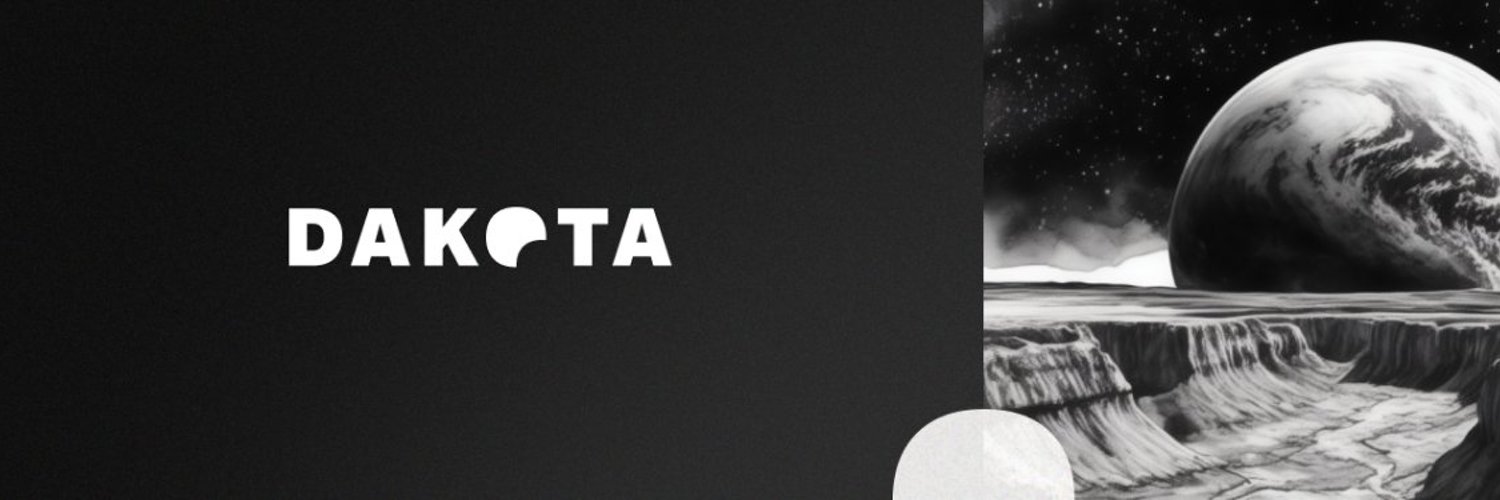
Dakota Banking has raised $12.5 million in Series A funding to revolutionize business banking through stablecoin infrastructure, processing $1.6 billion in annual transaction volume across 500+ businesses worldwide. This Innovation and Tech analysis examines how Dakota combines traditional banking familiarity with blockchain speed, offering treasury-backed deposits and global payment capabilities that eliminate counterparty risks plaguing conventional banks. Founded by former Coinbase, Square, and Airbnb executives, the platform represents a fundamental shift toward crypto-native business banking without requiring technical cryptocurrency knowledge.
Summary: Dakota secured $12.5M Series A led by CoinFund to expand its stablecoin-powered business banking platform. The company converts deposits to Treasury-backed stablecoins, enabling instant global transfers while maintaining user asset control and eliminating bank balance sheet risks.
What is Dakota Banking Platform?
Dakota operates as a crypto-integrated business banking platform that transforms traditional banking through stablecoin infrastructure. The startup, founded by alumni of Coinbase, Square, and Airbnb, lets businesses hold and move funds in U.S. dollars or stablecoins while using traditional payment networks like ACH, SWIFT and SEPA. Users interact with the platform like any conventional fintech app, but behind the scenes, all deposits automatically convert to stablecoins backed 1:1 by U.S. Treasuries.
The platform addresses critical weaknesses in traditional banking: slow transaction speeds, limited global access, and loss of asset control once funds enter bank balance sheets. Dakota maintains full reserve backing and keeps customer funds under client control rather than as bank liabilities, eliminating the counterparty risks highlighted during recent banking crises like Silicon Valley Bank’s collapse, as detailed in CoinDesk’s analysis of the funding round.
Core Value Proposition
Dakota’s business model centers on providing businesses worldwide equal access to U.S. dollar banking services regardless of geographic location. “Business today is borderless, and dollars are a universal language,” said Dakota CEO Ryan Bozarth. “We want to give entrepreneurs from Bogotá to Bangalore the same access to U.S. dollar banking that a startup in San Francisco would have.”
The platform has gained significant traction since launching in 2023, processing about $1.6 billion in transaction volume and is on pace to record $4 billion by December, Bozarth said. It has more than 500 businesses using its platform, the majority of which are outside the U.S.
Recent Series A Funding and Market Expansion
Investment Details and Investor Backing
Dakota, a crypto-integrated banking platform for businesses, has raised $12.5 million in a Series A round led by CoinFund, with participation from 6th Man Ventures and Triton Ventures. The funding round was purely equity-based, though Dakota declined to disclose its valuation.
CoinFund’s investment thesis reflects growing institutional confidence in stablecoin banking infrastructure. “We believe stablecoins can revolutionize business banking. Dakota is unlocking that potential by combining the familiarity of a bank account with the power of crypto rails. They’re not asking mainstream businesses to change how they operate — they’re upgrading the engine under the hood.”
Global Expansion Strategy
The Series A funding enables Dakota to expand services across 100+ countries, including regulated operations in the UK, European Union (under MiCA regulations), Singapore, and Latin America. This expansion addresses the significant market opportunity for U.S. dollar access among international businesses facing banking restrictions or slow cross-border payment systems.
“For a lot of folks outside of the U.S., access to a kind of U.S.-style bank account, or U.S. dollar-denominated account, is an incredibly valuable feature in itself,” said Bozarth in a Fortune interview. This global accessibility differentiates the platform from traditional banks that often impose geographic restrictions or lengthy onboarding processes for international businesses.
Dakota’s Technical Architecture and Features
Stablecoin Infrastructure and Treasury Management
Dakota’s technical foundation relies on converting all USD deposits into stablecoins backed by U.S. Treasuries, creating a non-custodial banking experience. Clients retain full asset ownership while accessing traditional payment rails including ACH, Fedwire, SWIFT, and SEPA for seamless global transfers.
The platform offers sophisticated treasury management capabilities, allowing businesses to earn up to 9% yields through multiple strategies:
- DeFi Protocol Integration: Client-directed lending through transparent decentralized finance protocols
- Protocol Staking Rewards: Participation in the blockchain network validation
- U.S. Treasury Returns: Conservative yield options for risk-averse clients
Unlike centralized crypto lenders such as Celsius or BlockFi that filed for bankruptcy, the platform only lends through DeFi protocols, where “there is, admittedly, some risk with that, but it’s at least a transparent risk, it’s smart contract risk” according to CEO Ryan Bozarth.
DKUSD Stablecoin and Platform Security
Dakota partnered with Bridge to issue its proprietary stablecoin, DKUSD, which provides enhanced security compared to publicly traded stablecoins, as documented in Bridge’s detailed case study. The stablecoin proved immensely popular, with approximately 55% of its assets transferred to DKUSD within its first few months, avoiding customer exposure to the depegging and security risks of publicly traded stablecoins.
DKUSD remains platform-exclusive, preventing external transfers that could expose users to market volatility or depegging risks. This approach ensures consistent 1:1 USD valuation while maintaining the speed benefits of blockchain-based transfers.
How Does Dakota Compare to Traditional Banking?
Advantages Over Conventional Banks
Asset Control and Security
Traditional banks convert customer deposits into liabilities on their balance sheets, exposing depositors to institutional risk during banking crises. Dakota’s non-custodial model ensures customers maintain direct ownership of Treasury-backed stablecoins, eliminating counterparty risk.
Transaction Speed and Global Access
While traditional wire transfers require 1-3 business days and high fees, Dakota enables near-instant settlements through blockchain infrastructure. The platform supports global operations without the geographic restrictions common among traditional banks.
Yield Generation Opportunities
Traditional business checking accounts offer minimal interest rates, often below 1% annually. Dakota provides access to higher yields through DeFi integration and Treasury management, with returns reaching up to 9% based on client risk preferences.
Limitations and Considerations
Regulatory Environment
As a money services business rather than a chartered bank, Dakota operates under different regulatory frameworks than traditional FDIC-insured institutions. While deposits are backed by U.S. Treasuries, they don’t carry traditional FDIC insurance protections.
Technical Complexity
Despite user-friendly interfaces, Dakota’s stablecoin infrastructure introduces smart contract risks and technical dependencies not present in traditional banking. Users must understand these trade-offs when evaluating platform suitability.
Investment Outlook and Market Positioning
Competitive Landscape Analysis
Dakota enters a rapidly evolving market where traditional finance and crypto infrastructure increasingly converge. Major banks like JPMorgan and Citi explore digital asset integrations, while crypto companies like Circle and Ripple pursue banking charters. This convergence validates the platform’s hybrid approach of combining banking familiarity with crypto-native infrastructure.
The stablecoin market has gained significant momentum, particularly following Stripe’s $1.1 billion acquisition of Bridge and advancing U.S. stablecoin legislation. The Senate passed the GENIUS Act, a bill that aims to regulate the tokens, providing regulatory clarity that benefits platforms like Dakota.
Growth Trajectory and Business Metrics
Dakota’s impressive transaction volume growth, from $1.6 billion processed to $4 billion projected by December 2025, demonstrates strong market demand for stablecoin banking solutions. The platform’s international customer base, with majority usage outside the U.S., indicates a significant global market opportunity for USD-denominated banking services.
The company’s experienced founding team brings credibility from managing over $100 billion in digital assets at Coinbase Custody and scaling consumer platforms at Airbnb. This expertise combination positions the platform well to navigate the complex intersection of traditional banking and blockchain technology.
FAQ: Dakota Banking Platform Guide
What makes Dakota different from traditional banks?
Dakota converts deposits to Treasury-backed stablecoins, enabling instant global transfers while maintaining client asset ownership. Traditional banks hold deposits as liabilities, exposing customers to institutional risk.
Is Dakota a regulated financial institution?
Dakota operates as a regulated money services business in the U.S. and Europe, partnering with FDIC member banks for banking services. It’s not a chartered bank but maintains full regulatory compliance.
How secure are funds on Dakota’s platform?
All deposits convert to stablecoins backed 1:1 by U.S. Treasuries. The proprietary DKUSD stablecoin remains platform-exclusive, preventing external transfer risks while maintaining blockchain-speed benefits.
What yield opportunities does Dakota offer?
Clients can earn up to 9% yields through DeFi protocol lending, blockchain staking rewards, or U.S. Treasury investments, with customizable risk allocation based on business preferences.
Which countries can access Dakota services?
Dakota serves businesses across 100+ countries, including the UK, EU, Singapore, and Latin America, providing global access to U.S. dollar banking services regardless of geographic location.
How does Dakota handle cross-border payments?
The platform supports ACH, Fedwire, SWIFT, and SEPA payment networks, enabling seamless global transfers with near-instant settlement times through blockchain infrastructure.
What are the risks of using Dakota?
Primary risks include smart contract exposure through DeFi integrations, regulatory changes affecting money services businesses, and technical dependencies inherent in blockchain-based banking.
Who should consider using Dakota?
International businesses needing U.S. dollar access, companies requiring fast global transfers, and organizations seeking higher yields on business deposits while maintaining asset control.
Key Takeaways
- Dakota raised $12.5 million Series A funding led by CoinFund to expand its stablecoin-powered business banking platform globally across 100+ countries
- The platform processes $1.6 billion annually across 500+ businesses, with majority usage from international companies seeking U.S. dollar banking access
- Dakota’s Treasury-backed stablecoin infrastructure eliminates traditional banking counterparty risks while enabling instant global transfers through ACH, SWIFT, and SEPA networks
- Advanced treasury management features offer up to 9% yields through DeFi integration and blockchain staking, providing superior returns compared to traditional business checking accounts
- Founded by experienced Coinbase, Square, and Airbnb executives, the platform represents the convergence of traditional banking familiarity with crypto-native speed and security
Dakota’s innovative approach addresses fundamental weaknesses in traditional banking while maintaining user familiarity, positioning the platform to capture significant market share as businesses increasingly demand global financial infrastructure that matches the speed of modern commerce.







